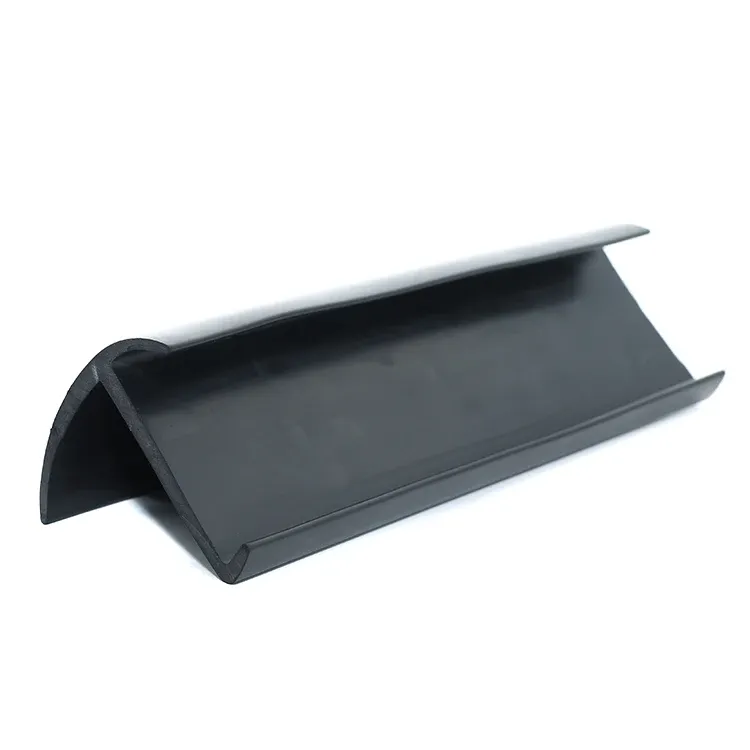
Rubber seals
jun . 20, 2024 17:25 Back to list
Rubber seals
Rubber seals
Thanks to its elasticity, rubber is a commonly used sealing material. Rubber seals are suitable for a wide range of applications.
Versatile features of rubber include flexibility, elasticity, strength and friction. Rubber seals also prevents vibration and are airtight and watertight.
Other rubber seals’ features:
- Rubber seals have excellent durability
- Rubber seals works in large temperature variations
- Insulates electricity
Electric conductivity, fire resistance and other features of rubber can also be improved if necessary. In addition, the usability of rubber in sealing solutions is enhanced by its adhesion to metals, plastics and textiles.
Our most widely used rubber types are:
- EPDM
- CR
- NBR
We also offer fireproof rubber types that comply with the latest fire standards.
EPDM rubber, i.e. ethylene-propylene rubber
Applications of synthetic EPDM rubber include seals, profile strips and cable coatings.
EPDM is the most common raw material used in sealing solutions, largely due to its:
- Long lifespan
- Excellent weather resistance
- High thermal resistance and resistance to chemical agents
In addition, EPDM rubber retains its flexibility at low temperatures and works at high temperatures, as well as in hot water or steam.
EPDM is highly resistant to water-based chemicals and solvents. It is available in a wide hardness scale: 25-90 ShA.
EPDM rubber is also available in types that comply with the EN 45545 standard for rail applications, as well as with the EN 681-1 standard for municipal engineering.
Fire classified EPDM rubber seals
FinnProfiles offers fireproof EPDM rubber that meets the following standards:
- DIN 5510 Part 2:2003-09: (Combustibility class: S4), (Smoke development class: SR 2), (Dripping class: ST2)
- UL 94 Vertical burning test; 94V-0
- EN 45545-2: 2013, R22, R23; HL1–HL3
- ECE-R118 Appendix 8
- NFF 16-101 F1 – I2
- NFPA130
- BS6853 Table 7 Cat. II
- EN45545-2 classification R22/23, HL1-3
-
Universal pvc garage door bottom threshold seal strip weather stripping rubber seal

CR rubber, i.e. chloroprene rubber
Also known as Neoprene, chloroprene rubber is a synthetic rubber that has been developed for conditions that require chemical resistance in particular.
Chloroprene is a highly durable material:
- It is strong and flexible
- And it has high ozone and weather resistance
Applications of CR rubber include:
- Seals
- Bellows
- V-belts
- Conveyor belts
- Vibration absorbers
CR is highly resistant to animal and vegetable based oils.
NBR – Nitrile rubber
NBR rubber has been developed for conditions requiring high oil resistance. In addition to oil, NBR is highly resistant to liquid fuels and most solvents.
Because of its high oil resistance, NBR rubber is used, for example, in seals and protective beams used in, for example, municipal and automotive applications.
SBR rubbers, i.e. styrene-butadiene rubber
SBR rubber, i.e. styrene-butadiene rubber, is a general-purpose rubber type that is used when the product does not require special features, such as oil resistance.
SBR rubber was originally developed to replace natural rubber. Its benefits include:
- High viscosity
- Wear resistance
- Frost resistance
Indeed, SBR rubber is widely used in typical rubber applications, such as car tires, rubber footwear, conveyor belts, hoses, and profile strips.
IR rubber, i.e. isoprene rubber
IR rubber, i.e. isoprene rubber, is a synthetic substitute for natural rubber, which is suitable as such for various purposes. It is most commonly used as a mixture with other rubbers.
Mixing SBR rubber with IR rubber improves the material:
- Tensile strength
- Tear strength
- Flexibility
-
Plastic + Aluminum Channel Aluminum Groove Belt Supplier - Premium Channel Edge Products Exporter
NewsJun.10,2025
-
High Quality Chrome Trim Strip Leading Manufacturer & Custom Factories Service
NewsJun.10,2025
-
Premium Car Trim Strip – Leading Car Moulding Trim Strip Exporters & 3 Car Moldings Trim Strip Manufacturers
NewsJun.10,2025
-
Premium White Transparent PVC Adhesive Strips Strong Bond & Waterproof
NewsJun.10,2025
-
Premium Plastic Aluminum Channel Groove Belt for Durability
NewsJun.10,2025
-
Aluminum Rubber Edge Channel Groove Sideband Durable Edge Protector
NewsJun.10,2025
